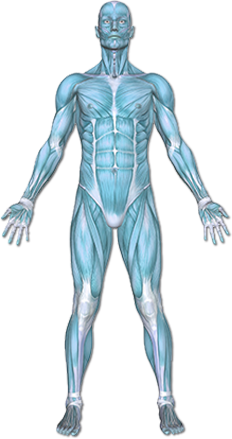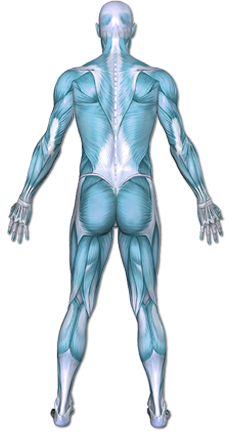Sciatica
The sciatic nerve begins from the lower spine on both sides of the body. It travels deep in the pelvis to the lower buttocks. From there, it passes along the back of each upper leg and divides at the knee into branches that go to the feet. Sciatica is an irritation of the sciatic nerve.


Copyright © Nucleus Medical Media, Inc.
This content was created using EBSCO’s Health Library
Sciatica is caused by irritation or pressure on the sciatic nerve. This can be the result of:
- Herniated disk—the cushions between the bones of your spine bulge and press on the nerve as it exits the spinal column
- Arthritis in the lower back
- Spinal stenosis—narrowing of the spinal canal in the lumbar area
- Spondylolisthesis—slippage of a bone in the lower back
- Cauda equina syndrome—nerve roots at the base of the spinal cord are compressed
- Piriformis syndrome— spasm of piriformis muscle
This content was created using EBSCO’s Health Library
Sciatica is more common in men. Other factors that may increase your risk of sciatica include: Lifestyle and personal health factors, such as:
- Obesity
- Smoking
- History of low back problems
- Anxiety and depression
Occupational factors, such as:
- Heavy manual labor
- Heavy lifting
- Exposure to vibrations
- A job that requires standing for long periods of time and forward bending
Health conditions, such as:
- Fractures in the back
- Tumors
- Infections
- Metabolic problems, such as diabetes
This content was created using EBSCO’s Health Library
Sciatica causes symptoms that can range from mild to severe. In general, sciatica may cause:
- Burning, tingling, or shooting pain down the back of one leg
- Pain in one leg or buttock that may get worse with:
- Sitting
- Standing up
- Coughing
- Sneezing
- Straining
- Weakness or numbness in a leg or foot
More serious symptoms associated with sciatica that may require immediate medical attention include:
- Continuing weakness in a leg or foot
- Numbness in groin or the buttocks
- Difficulty walking, standing, or moving
- Loss of bowel or bladder control
- Fever, unexplained weight loss, or other signs of illness
This content was created using EBSCO’s Health Library
The doctor will ask about your symptoms and medical history and a physical exam will be done. Your doctor will pay particular attention to your back, hips, and legs. The physical exam will include tests for strength, flexibility, sensation, and reflexes. Imaging tests take pictures of internal structures. These may include:
- X-ray
- MRI
- CT scan
Your doctor may also need to test your nerves. This can be done with a nerve conduction study or electromyography (EMG).
This content was created using EBSCO’s Health Library
The goal of treatment is to reduce sciatic nerve irritation. Treatment options include:
Activity
Bed rest is not generally recommended. It may be suggested for no more than 1-2 days in those with severe pain. Your doctor may recommend that you restrict certain activities for a period of time and then resume them as soon as possible. You may be able to shorten your recovery time by staying active and exercising. Physical therapy may include:
- Cold packs or heat therapy
- Stretching and strengthening exercises
- Massage
- Ultrasound treatments or electrical stimulation
- Posture education and appropriate lifting instructions
Your therapist will educate you on pain-relieving techniques (such as ice) and decreasing or modifying painful activities. This diagnosis often occurs from muscular tightness or weakness which causes pressure on the sciatic nerve which leads to pain and other symptoms. Your therapist will educate you on proper stretching and strengthening exercises for the back and hip. They may perform hands on, manual therapy techniques to further increase your joint flexibility. The final phase of rehab will involve strengthening during functional activities and education to prevent the injury from recurring.
This content was created using EBSCO’s Health Library
Sciatica tends to be a recurrent condition. To help reduce your chances of sciatica, take these steps:
- Use proper body movement when playing sports, exercising, or lifting heavy objects.
- Practice good posture to reduce pressure on your spine.
- Begin a safe exercise program with the advice of your doctor.
- If possible, avoid sitting or standing in one position for long periods of time.
- Consider job retraining if your work requires a lot of heavy lifting or sitting.
This content was created using EBSCO’s Health Library
This content was created using EBSCO’s Health Library


